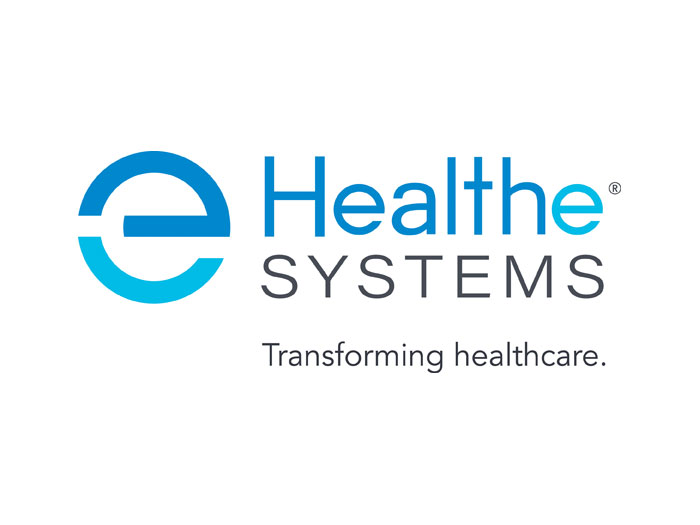Sponsored: Munich Re
Navigating Turbulent Waters: Learn How Life Sciences Companies Are Managing Converging Risks in an Era of Uncertainty

The life sciences sector finds itself at a critical juncture. Regulatory approvals are taking longer, talent costs are rising, and new technologies are creating both opportunities and exposures that didn’t exist a decade ago. For companies developing pharmaceuticals and medical devices, these converging challenges threaten to prevent some important innovations from ever reaching the market.
“A lot has been going on with the Food and Drug Administration,” said James Craig, Underwriting Manager, Life Science at Munich Re Specialty – North America. “There is turnover of employees, fewer resources, new guidance and less predictability from the FDA. Approvals take longer for new products or labeling changes.”
This regulatory unpredictability represents just one element of what Craig described as “rough waters” for the life sciences industry. The combination of multiple challenges arriving simultaneously has created an environment where companies must rethink their approach to risk management and seek more comprehensive partnerships with their insurance providers.
Regulatory Complexity Creates Cascading Challenges

James Craig, Underwriting Manager, Life Science at Munich Re Specialty – North America
Clinical trials, already complex undertakings, have become even more difficult to navigate as resources stretch thin and approval timelines extend.
“Clinical trials are already difficult enough to begin with, but then you lay on top of that some of these complexities,” Craig said. “The result could prevent medical product innovations from ever coming to market because the companies or entities that conduct clinical trials don’t even begin the process in the first place.”
Beyond regulatory hurdles, macroeconomic factors are compounding the pressure on life sciences companies. Tariffs on pharmaceutical imports from China and India, which supply the majority of generic drugs to the United States, have created cost uncertainties that companies must either absorb or pass along to customers.
“They need to determine how they’re going to absorb that or pass that on to their customers,” Craig said regarding tariff impacts. The acceptance of new products by insurance companies adds another layer of complexity, as companies must demonstrate that their innovations are valuable enough to warrant coverage.
The convergence of these issues creates a particularly challenging environment. “It’s never been easy, but it is interesting that these issues are converging all at one time,” Craig noted. “And that doesn’t even address chasing talent and the increased difficulty for foreign science talent to enter the United States.”
For underwriters working with life sciences companies, understanding the full scope of these operations has become increasingly complex. Companies may be developing proprietary products while simultaneously manufacturing products for others, creating contractual relationships that require careful evaluation.
“Maybe they don’t have a proprietary product themselves, but they are manufacturing a product for someone else, like a drug innovator who doesn’t want to build a $60 million factory, so they’ll outsource it to one of our clients,” Craig explained. “If our client then, through their negligence, causes a financial loss to that customer, do they have coverage for that?”
Artificial Intelligence: A Double-Edged Innovation
While artificial intelligence offers promising solutions for some industry challenges, it simultaneously introduces new risks that companies are only beginning to understand. The technology’s application in life sciences isn’t entirely new—the FDA website lists AI-enabled products dating back more than a decade. However, the rapid expansion of AI capabilities has created both opportunities and exposures that require careful management.
In clinical trials, AI’s ability to process exponentially more patient data promises to revolutionize how companies identify and recruit test subjects. “If I’m doing a cancer trial for a very unique form of cancer, I can target and probably exclude potential test subjects with this data that, with the old dataset, I wouldn’t have known that,” Craig said. “I can target people with clinical trials that’ll be more effective, and get a better result because I am not wasting people’s time and resources.”
This targeted approach could significantly improve trial efficiency and outcomes. By identifying patient populations most likely to benefit from a treatment, companies can conduct more focused trials with better results. Yet this same capability introduces new risks around potential discrimination and bias.
“The discrimination piece would be when targeting a test population for a drug and recruiting test subjects,” Craig explained. “AI might point to certain types of people or patients, and at the end of the day, this selection process appears or actually could be discriminatory.”
While targeting specific demographics may be valid when a disease disproportionately affects certain populations, AI systems that direct companies toward specific groups without valid medical reasons could expose them to discrimination actions. “If it’s a disease that affects all types of people equally, but the AI is still directing toward a specific demographic, that’s where companies could face discrimination actions,” Craig said.
The cybersecurity implications of AI adoption add another layer of complexity. Life sciences companies handle vast amounts of sensitive patient data, making them attractive targets for cyber criminals. “Cyber threats are more prevalent,” Craig noted. “And our customers have a lot of patient data. With the trials they perform, they need to be careful to appropriately protect it.”
Despite these challenges, few companies have the internal expertise to manage AI risks effectively. “Having someone like a chief AI officer, for lack of a better term, is becoming more common,” Craig said. “A lot more of these positions exist now than they did a year ago, but there’s still not enough. We’re not even close.”
“For companies without dedicated AI leadership, the solution often involves outsourcing to firms that can help with implementation and risk management best practices.,” Craig explained. “Most companies do not have this position yet. It may be in development, or they will buy the service externally.”
Building Comprehensive Risk Partnerships
As life sciences companies navigate this complex landscape, the role of insurance partners has evolved beyond traditional coverage to encompass broader risk management support. Munich Re Specialty has positioned itself to address these multifaceted challenges through an integrated approach that combines specialized expertise across multiple risk domains.
“Munich Re Specialty is a very reliable company,” Craig said. “We don’t get in and out of things. We’re pretty consistent. We don’t flip in and out of markets very often, and it’s very thoughtful.”
The company’s structure, with its life science unit embedded within a healthcare liability unit, provides access to specialized expertise across different risk areas. This integration proves particularly valuable when companies face exposures that cross traditional coverage boundaries, such as quasi-medical malpractice situations that can arise during clinical trials.
“I have resources to help me,” Craig explained. “I’m a product underwriter in E and O. I’m not a med mal expert, but I have experts that are 50 feet away from me that can help me understand the exposure, develop a policy form or endorsement, or have them write that part of the exposure separately.”
Munich Re Specialty’s approach to claims handling provides another advantage for life sciences companies navigating complex risks. By managing claims in-house rather than outsourcing, the company maintains direct insight into emerging trends and can respond more quickly and effectively to client needs.
“I also like that we handle our own claims, and we’re part of a healthcare claim unit,” Craig said. “How do you know your book if you don’t know your claims? And that’s more easily accomplished if you’re doing your own claims.”
The increasing importance of cyber risk has led to close collaboration between Munich Re Specialty’s life science and cyber units. This internal coordination eliminates potential complications that can arise when multiple carriers are involved in a single claim. “If you have a loss that falls into a gray area, it’s like, well, whose claim is it?” Craig explained. “If there was ever a dispute or question, we’d resolve it internally. And that would be invisible to the client.”
Recognizing the unique risks associated with artificial intelligence, Munich Re has developed specialized products through its HSB team, including aiSure™. These insurance products address risks that traditional coverage might not capture, including performance warranties for AI systems, discrimination claims, intellectual property infringements, and regulatory fines.
“Providing a performance warranty is essential – what if the AI comes up with the wrong result?” Craig said. “Certainly, if people were hurt, if there was some kind of bodily injury, our product liability would respond. But you could also get into risks of discrimination, IP infringements, and regulatory fines. These are situations where no one was physically hurt, but there was financial and reputational harm.”
Looking ahead, the life sciences sector will continue to face an evolving risk landscape as regulatory uncertainty persists and new technologies emerge.
Success in this environment will require life sciences companies to take a more comprehensive approach to risk management, working closely with insurance partners who understand the interconnected nature of modern risks. From regulatory compliance and cyber threats to AI implementation and talent acquisition, companies need partners who can provide both coverage and expertise across multiple domains.
For life sciences companies ready to address these converging challenges, the path forward involves building partnerships that extend beyond traditional insurance relationships. As the industry continues to evolve, those companies that develop comprehensive risk management strategies with experienced partners will be best positioned to bring their innovations to market while protecting their operations from emerging threats.
To learn more about how Munich Re Specialty – North America brings together a wealth of Life Science solutions backed by the confidence that comes with decades of expertise and stability, visit https://www.munichre.com/specialty/north-america/en/solutions/healthcare-liability/life-science.html.
![]()
This article was produced by the R&I Brand Studio, a unit of the advertising department of Risk & Insurance, in collaboration with Munich Re Specialty. The editorial staff of Risk & Insurance had no role in its preparation.










